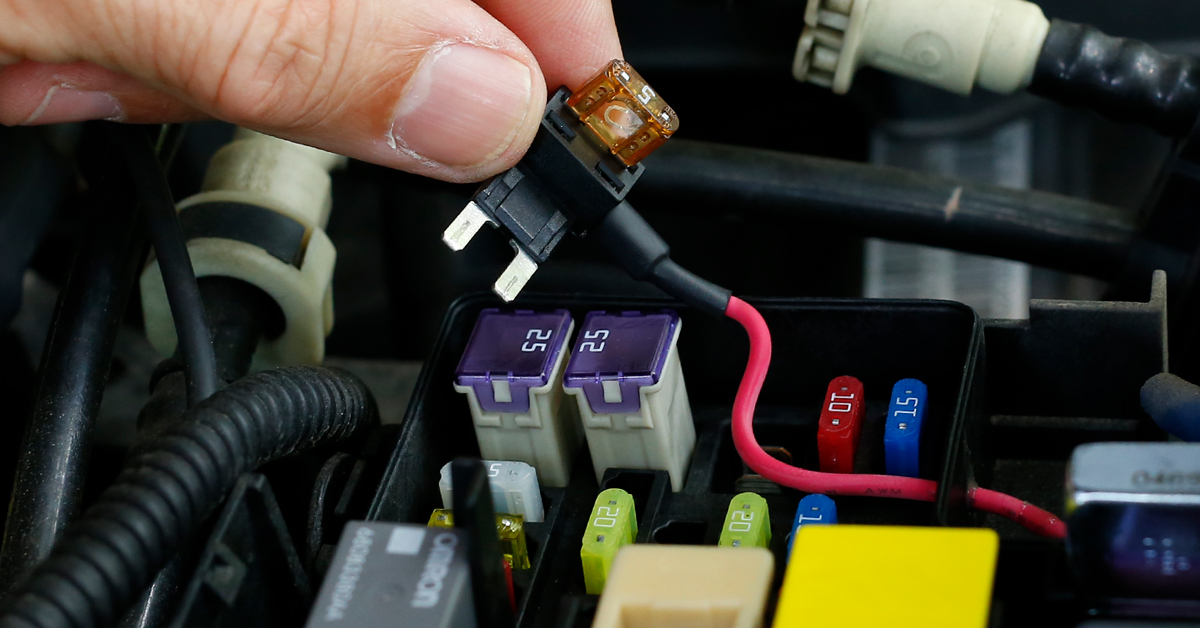A Biased View of Blue Sea Fuse Block
Wiki Article
Indicators on Blue Sea Fuse Block You Need To Know
Table of ContentsExcitement About Blue Sea Fuse BlockUnknown Facts About Blue Sea Fuse BlockBlue Sea Fuse Block for BeginnersA Biased View of Blue Sea Fuse BlockThe Single Strategy To Use For Blue Sea Fuse BlockThe Blue Sea Fuse Block PDFs
Fuses are bolted in position in between the bus bar and also the second collection of electrically isolated bolts. With this installation you can affix the boat's various high-current circuits, such as a windlass, bow thruster, high-output alternator, the DC panel, etc, to the isolated bolts. The numerous fuses are sized according to the current-carrying capacity of the conductors bolted to them.Some circuits will still need to bypass the isolation switch so that they might be left on when the rest of the boat is closed down. blue sea fuse block. These circuits commonly include a bilge pump as well as any kind of charging gadgets (consisting of photovoltaic panels, possibly a wind generator, and the inverter if it additionally doubles as a battery charger).
This belongs to the circuit layout we developed for the complicated instance watercraft in our Watercraft Electrics training course. The gadgets linked to the fuse block in the upper right are all bypassing the seclusion switch S1. If you enroll in Boat Electrics 101, you will certainly discover just how to review such a representation as well as additionally exactly how to make one for your own boat.
Blue Sea Fuse Block - The Facts

With DC circuits, the OCP is constantly positioned in the favorable side of DC circuits. Note that some European boatbuilders set up merges and also battery switches in the DC negative side and also on the positive side, but this is not recommended except in some separated (drifting) ground DC systems.
This point may be at the battery, the battery button, the circulation panel, a subsidiary panel, some distribution bus bar, or various other attaching factor. If the conductors in the new circuit are no smaller than the conductor that feeds the brand-new circuit's point of link, after that the OCP for the feeder conductor will completely shield the new circuit - blue sea fuse block.
The Greatest Guide To Blue Sea Fuse Block
If the brand-new circuit is not sufficiently offered by overcurrent gadgets currently in place, added protection is called for at its point of connection, i. e., at its resource of power. Placement of integrates in the favorable conductor. Keep in mind exactly how a smaller fuse is utilized every time a smaller sized conductor is connected, Sometimes area limits just how close an OCP device can be positioned to the source of power.If they need to be installed in battery areas, they ought to be ignition protected.) The concern after that develops, just how close is close enough? The generic answer, from the ABYC, is within 7" (17. 5cm). The ABYC enables the adhering to, which have been tightened up in the last few view publisher site years: A conductor connected directly blue sea fuse block to a battery that is likewise "contained throughout its entire range in a sheath or unit such as a conduit, joint box, control box or enclosed panel" need to have its overcurrent protection "as close as achievable to the battery, but not to go beyond 72 inches (1 - blue sea fuse block.
Gone is the covering 72" allocation that utilized to be there. A conductor linked to a resource of power besides the battery (e. g., the battery switch, the distribution panel, or a few other factor in the DC circuits) that is in a similar way contained in a sheath, etc, have to have its overcurrent protection "as close as achievable to the point of connection to the source of power, yet not to go beyond 40 inches (1.
Facts About Blue Sea Fuse Block Uncovered
Given that generators themselves are a source of power, it has been open to question whether these added generators required OCP at the generator itself."Cranking-motor circuits are not required to have overcurrent defense.In the marine area, where cranking circuits might be long, this method could produce a hazard. If a vehicle ignites, the residents can draw over and leap out. If a boat captures fire, it is not so simple. It makes no sense to have any kind of unguarded circuits on a boat.
In cool weather condition, the inrush existing on a 12V starter motor may be as high as 1,500 amps; the cranking current might be as much as 200 amps. Frequently, cranking conductors are undersized even for the cranking current, not to mention the inrush existing. This circumstance does not pose a safety trouble per se, due to the fact that these currents are endured for just a couple of seconds, so web link the conductors do not have time to fume sufficient to develop a fire hazard.
See This Report about Blue Sea Fuse Block
We made the program with absolute novices in mind. As the electric tons on watercrafts boosts, so as well does the complexity of electrical circuits and the capacity for short circuits and also electrical fires.
In the aquatic area, where cranking circuits may be long, this method may develop a hazard. It makes no sense to have any type of unprotected circuits on a boat.
The Basic Principles Of Blue Sea Fuse Block

If you wish to find out exactly how to wire a boat, detailed in 56 video clip lessons, take a look at our Boat Electrics 101 course. We made the training course with outright novices in mind. As the electric tons on boats increases, so too does the complexity of electrical circuits and the possibility for brief circuits as well as electrical fires.
Report this wiki page